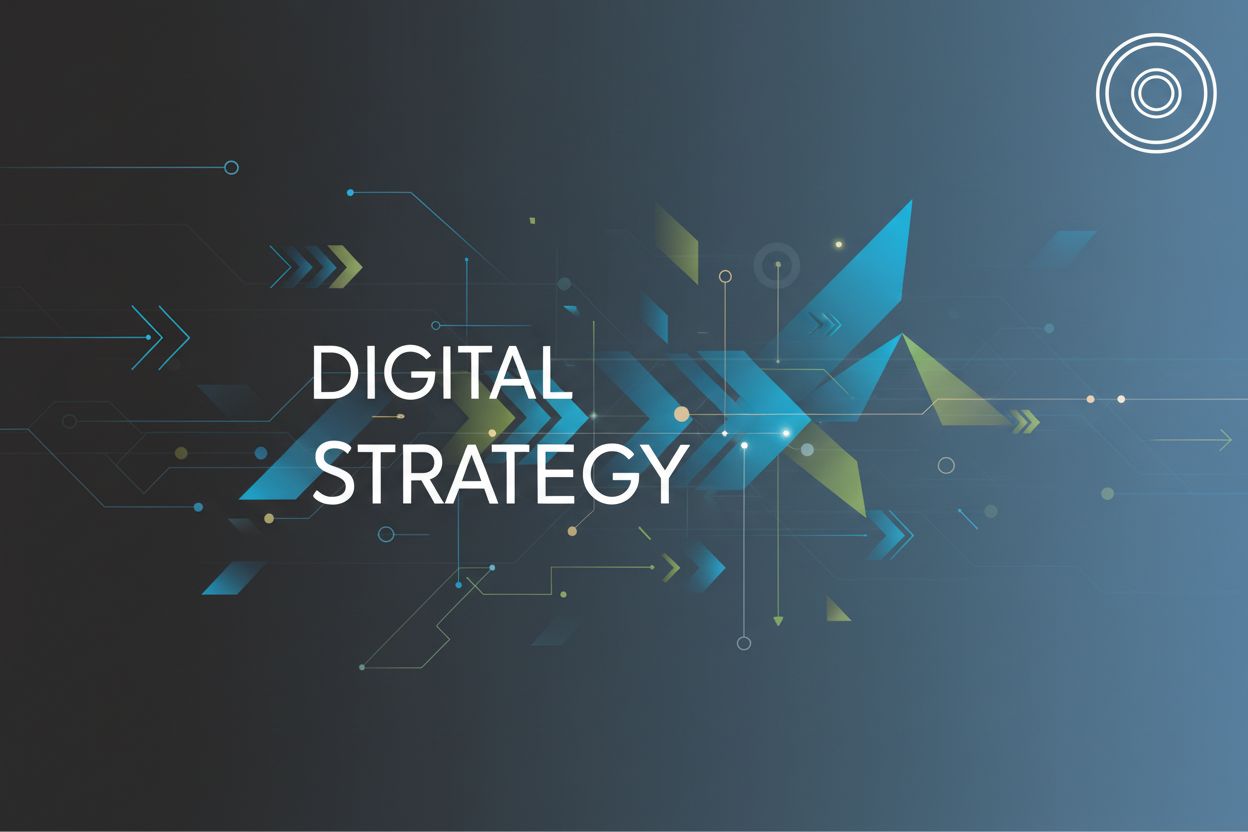Digital Marketing Strategies: Explained with Examples
TL;DR
Understanding the Digital Marketing Landscape
Okay, let's dive into this digital marketing thing. It's kinda crazy how much it's changed, right? Seems like just yesterday we were all about print ads, and now... well, now if you ain't online, you might as well not exist. The internet and mobile devices really changed the game, making digital channels the primary way to reach people.
It's not just about throwing up a website and hoping for the best. It's about understanding how people use the internet and then meeting them where they are. Like, is your audience doomscrolling on TikTok, or are they hanging out on LinkedIn looking for serious business insights? Big difference. It's all about using online platforms to get your message out there. Investopedia sums it up pretty well: it's using everything from websites to social media and search engines to get your product or service noticed.
So, what are some of the main ingredients? You got:
- SEO (Search Engine Optimization): Making sure your website shows up when people google stuff. Like, if you sell custom dog sweaters, you want to be the first thing people see when they search "ugly sweaters for chihuahuas." This is crucial because it helps people find your content when they're actively looking for what you offer.
- Content Marketing: Creating cool stuff like blog posts, videos, or infographics that people actually want to see.
- Social Media Marketing: Hanging out where your customers hang out online. Whether that's Instagram, Facebook, or even Reddit.
- Email Marketing: Still alive and kicking! It's about sending out newsletters and promotions that people actually open and read.
- PPC (Pay-Per-Click): Paying for ads that show up on Google or social media. It can get expensive, but it's a quick way to get noticed.
You need a plan. A real, thought-out strategy, to get anywhere. Honestly, just randomly posting on Instagram isn't gonna cut it. A good strategy helps you target the right people, measure your ROI (return on investment), and keep your brand consistent. Without it, you're just throwing money into the void, which, let's face it, nobody wants to do.
Think of it this way: what would happen if a hospital didn't have a strategy? Chaos, right? Same goes for your marketing.
Now, in the next section, we'll break down some of those key types of digital marketing and show you how they actually work.
Content Marketing Strategies: Engaging Your Audience
Alright, let's talk content marketing strategies. Ever feel like you're shouting into the void online? Yeah, me too. It's tough to get noticed, but that's where a solid content strategy comes in to play, grabbing your audience's attention and keeping it.
Content marketing is all about creating stuff people actually want to see. Think blogs, videos, infographics, podcasts—anything that provides value and isn't just a sales pitch. It's about building relationships with your audience by offering them helpful and interesting information.
Here's the catch: Your content needs to be valuable and relevant, not just random noise. You gotta understand what your audience cares about.
It's not enough to just think you know your audience; you need to really know them. What keeps them up at night? What are their pain points? What kind of content do they gobble up?
- Different strokes for different folks: A healthcare company might create blog posts about wellness tips, while a retail brand could share style guides and customer spotlights. It's all about speaking their language, you know?
- Format matters: Some people love reading in-depth articles, while others prefer watching short, engaging videos. Mix it up to cater to different preferences.
Let's say you're running a financial firm. Instead of just pushing investment services, you could create a series of blog posts explaining complex financial terms in plain English. Or maybe even a podcast where you interview successful entrepreneurs about their financial journeys.
It's like creating a helpful resource hub that just so happens to be associated with your brand.
Don't forget about seo. You could write the most amazing blog post ever, but it won't matter if nobody can find it. SEO is crucial because it helps search engines understand your content and rank it higher in search results, making it discoverable to your target audience. Make sure you're using relevant keywords, optimizing your title tags and meta descriptions, and building backlinks to boost your search engine ranking.
Of course, it's worth noting that you should be mindful of ethical implications. Data privacy is a big deal, so you want to be upfront about how you collect and use information.
Social Media Marketing: Building Brand Presence
Alright, social media marketing, huh? It's more than just posting pretty pictures; it's about building a real connection. Think of it as your brand's personality shining through the digital noise. It's about making people want to follow you, not just because they have to.
First, you gotta figure out where your peeps are hanging out. No use shouting into the void, right?
- Know your audience: Are they all about the visuals on Instagram? Or are they more the chatty type on Twitter (or X, whatever)? A financial firm might find more success on LinkedIn, sharing industry insights, while a hip clothing brand crushes it on TikTok with short, trendy videos. It's not rocket science, but it does take a little research.
- Platform Demographics: Each platform has its own vibe. Like, the median age on Facebook is, uh, getting up there (sorry, Facebook!), probably in the mid-30s, while TikTok is where the Gen Z crowd hangs. Don't be the brand trying too hard to be cool where they just don't fit.
Okay, so you know where to be, now what do you say? That's where the magic happens!
- Brand Voice is Key: Is your brand sassy and irreverent, or professional and informative? Whatever it is, own it! Wendy's on Twitter? chef's kiss. They're not afraid to throw shade, and people love it.
- Visuals Matter: Let's be honest, nobody wants to read a wall of text. Eye-catching images, short videos, even infographics, are your best friends. A healthcare company could use visuals to explain complex medical procedures, while a retail brand could showcase its products in lifestyle settings.
- Get the People Involved: User-generated content (ugc) is gold! Encourage your followers to share their experiences with your product or service. Run contests, ask questions, and respond to comments. According to Business.Adobe.com, Apple's #ShotoniPhone campaign is a perfect example of using UGC to promote its products.
Sometimes, you gotta pay to play. Social media ads can really help you reach a wider audience.
- Targeting is Your Superpower: Facebook Ads Manager, for instance, lets you target people based on their interests, demographics, even their behavior. Pretty powerful stuff.
- Don't Break the Bank: Set a budget and track your results. A/B testing different ad creatives and copy can really help you optimize your spending.
Building a solid social media presence takes time, but it's worth it. It's about more than just selling stuff; it's about building a community and creating a brand that people actually care about.
Email Marketing: Nurturing Leads and Driving Conversions
Ever feel like your carefully crafted emails are just disappearing into the digital abyss? You're not alone. But before you give up on email altogether, let's talk about how to actually make it work.
First thing's first: you can't nurture leads if you don't have any leads. Building a solid email list is key. Think of it as your VIP section— these are the people who've already shown interest, so treat 'em right.
- Offer something valuable for signing up. Think beyond just a generic "subscribe!" offer. Ebooks, discount codes especially for new subscribers, or invites to exclusive webinars work wonders.
- Use lead magnets. Create something irresistible that solves a problem for your target audience. Opt-in forms strategically placed on your website can then deliver that value.
- Promote your list everywhere. Don't keep it a secret! Mention it on social media, in your blog posts, even at the bottom of your email signature.
Okay, you've got your list. Now what? Don't just blast out the same generic message to everyone. Make it personal, or as personal as it can get!
- Segment, segment, segment! Tailor your messages to specific groups based on their interests, demographics, or purchase history. A healthcare provider, for instance, might send different emails to patients interested in cardiology versus pediatrics.
- Write killer subject lines. If your subject line doesn't grab attention, your email is dead in the water. Keep it short, intriguing, and relevant to the content inside.
- Use visuals and a clear call to action (cta). Nobody wants to read a wall of text. Break it up with images, videos, and buttons that tell people exactly what you want them to do.
For instance, for an e-commerce business, a great cta is "Shop Now!" Other effective CTAs include "Learn More," "Download Your Guide," or "Get 20% Off Today." It's important to tailor the CTA to the specific goal of your email.
You don't have the time to hand-write every single email. Marketing automation is your friend.
- Set up welcome emails. A warm greeting and a clear explanation of what subscribers can expect from you goes a long way.
- Nurture sequences are key. Don't just send one email and forget about it. Create a series of emails that gradually introduce your product or service and build trust.
- Don't forget abandoned cart emails. Remind people about those items they left behind, maybe with a little incentive to complete the purchase.
And hey, as you are building these email automations, be mindful of data privacy and make sure you're complying with regulations like GDPR and CCPA. Transparency is key!
Emerging Digital Marketing Trends
Okay, so you're probably wondering what's new in digital marketing, right? It's like trying to keep up with the latest TikTok dance craze – things change fast! Let's dive into some trends that's grabbing attention.
First off, influencer marketing is still HUGE, but it's evolving. It's not just about finding someone with a ton of followers. It's about finding the RIGHT influencer for your niche. Someone who genuinely connects with your target audience. It has to be authentic, or users immediately see through it. Think micro-influencers with smaller, but super-engaged audiences.
- Finding the right influencers means doing your homework. Dig around and find people who aren't just popular, but also have real influence with your target audience.
- Authenticity is key. I mean, nobody trusts an influencer who's clearly just reading off a script.
- Measuring impact is crucial. Use affiliate links, trackable codes, or dedicated landing pages to see what's actually working. Affiliate links provide a unique URL for each influencer, allowing you to track sales directly attributed to them. Trackable codes, like unique discount codes, also help pinpoint sales sources. Dedicated landing pages, specific to an influencer's campaign, make it easy to monitor traffic and conversions originating from their promotions.
Social media is still a huge platform for marketing, but it has become increasingly more expensive for business owners, especially when it comes to paid advertising.
And don't even get me started on video marketing. Short-form video is still king, especially for grabbing attention on social media. But long-form video isn't dead, either. YouTube is still a powerhouse for in-depth content and building a loyal following.
- Short-form videos need to be punchy and attention-grabbing. Think TikToks, Instagram Reels. Hook viewers in the first few seconds and provide value fast.
- Long-form videos are great for building authority and trust. Tutorials, interviews, documentaries – anything that provides real value and keeps people watching.
- Visual storytelling is everything. Don't just throw information at people; tell a story that resonates emotionally.
And finally, ai and marketing automation are changing the game. It's helping make marketing feel human, but at scale. ai can personalize marketing messages, automate repetitive tasks, and analyze data to improve campaign performance. But it's not about replacing humans – it's about augmenting them.
- ai can help personalize email subject lines, product recommendations, and even ad creatives.
- Automation can handle tasks like social media posting, email segmentation, and lead nurturing.
- Data analysis is where ai really shines. It can sift through mountains of data to identify patterns and insights that humans would miss.
It all boils down to using emerging trends to connect with people in meaningful ways. And hey, as you start to integrate all these strategies, be mindful of data privacy!
Measuring and Analyzing Your Digital Marketing Efforts
Alright, so you've been throwing spaghetti at the wall with your digital marketing efforts, huh? Wondering if anything's actually sticking? Turns out, just "being online" ain't enough anymore. You gotta know what's working and, more importantly, what's not.
First things first, let's talk KPIs. These are the metrics that tell you if you're winning or losing. We're talking about stuff like:
- Website Traffic: How many eyeballs are landing on your site? Are they the right eyeballs? To figure this out, you need to look at demographics, interests, and behavior patterns within your analytics to see if they align with your ideal customer profile.
- Conversion Rates: Are those visitors actually doing anything useful, like signing up for a newsletter or buying something?
- Cost Per Lead (CPL): How much are you shelling out to snag each potential customer?
- Customer Acquisition Cost (CAC): The total cost to bring a new customer into the fold.
- ROI: The big kahuna. Are you making more money than you're spending?
It's not just about picking random numbers, though. You need realistic goals and then track your progress over time. This data is your compass; use it to make smart calls and steer your ship in the right direction.
So, how do you get your hands on this magical data? That's where analytics tools come into play. Think of these as your digital detectives.
- Google Analytics: The OG. Tracks everything from website traffic to user behavior.
- Social Media Analytics: Each platform (Facebook, Instagram, X) has its own analytics dashboard to measure engagement.
- Email Marketing Analytics: See who's opening your emails, clicking on links, and hitting that unsubscribe button.
Set up goals in these tools so you can track conversions – like someone filling out a contact form or making a purchase. Analyze the data to find areas that need some love.
Okay, you've got the data, now what? Time to put on your reporter hat.
- Create regular reports to track progress and spot any trends.
- Share those results with the team and make some recommendations.
- Use this data to show it's a good investment.
Data points you to the problems, and then you find the solutions.
Imagine a local bakery. Their website traffic is decent, but nobody's buying online. By digging into Google Analytics, they see people are bailing when they hit the clunky checkout page, indicated by a high bounce rate on that specific page. They simplify the process, add a guest checkout option, and boom—online orders skyrocket.
Or take a healthcare provider. They're posting wellness tips on Facebook, but engagement is crickets. They experiment with short videos instead of long text posts, and suddenly, their follower count explodes, with engagement metrics like likes, shares, and comments significantly increasing.
These are just a few examples, but the idea's the same.
By measuring and analyzing your digital marketing efforts, you can make sure you're not just spinning your wheels. You’ll know what's working, what's not, and how to tweak things to get the best results. It's an ongoing process, but trust me, it's worth it in the long run.
Wrapping It All Up
So, we've journeyed through the wild world of digital marketing, from understanding the basics to digging into specific strategies and finally, figuring out if any of it is actually working. It's a lot, right?
We talked about how the digital landscape has totally changed, and how you really gotta be online to even be a blip on the radar these days. We broke down the core components like SEO, content, social media, and email marketing, and how they all play a part in getting your message out there. Remember, it's not just about shouting into the void; it's about creating value and building connections.
We also touched on some of the newer, exciting stuff like influencer marketing and video, and how ai is starting to make things more efficient. And most importantly, we hammered home the need to measure everything. Without tracking your KPIs and analyzing your data, you're just guessing.
The biggest takeaway? Digital marketing isn't a set-it-and-forget-it thing. It's a constant cycle of learning, adapting, and optimizing. Keep an eye on what's working, don't be afraid to experiment, and always, always keep your audience in mind. That's how you truly make your mark online.




